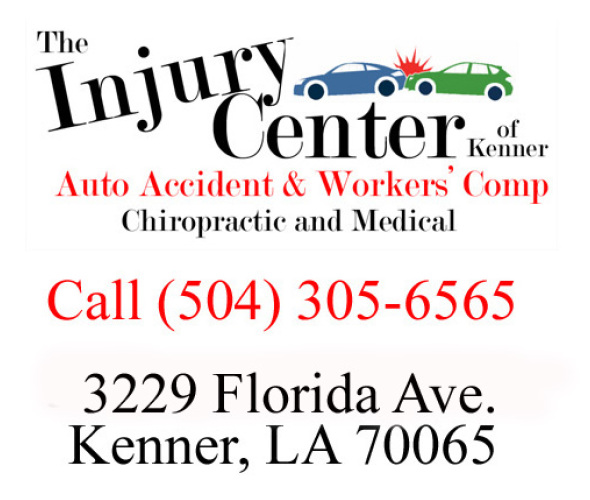A 42 year old, female patient presented with neck pain that had been present for 2
months. The pain came on gradually and without a specific cause. Her vocation
is answering the phone for a busy mail order shoe store. She works 40 hours a
week, 5 days per week and never weekends. Pain worsens with work, especially
by the end of the 8 hour shift. Other pain producers include driving more than
30 minutes, reading more than 30 minutes, and washing hair with the head back.
Pain improves with resting the head on a chair or pillow, moving the head in
circles, 600 mg of Ibuprofen (repeated 3x/day), and a hot shower. She describes
the pain as an ache with intermittent sharp pain that is becoming more frequent, "
...when I move the wrong way." There is no shooting pain into the arms or hands.
Sound familiar? This is a "typical" neck pain patient that presents to chiropractic
offices around the world. What is different is that every person is unique and
each case must be individually managed. For example, some patients "hate
doctors" or are extremely anxious about going to any doctor. This might stem
back to a prior "bad experience" with a health care provider at a very young
age or perhaps even a more recent event. None-the-less, the approach used in
this type of presentation may be best if it is very methodical, reassuring, and
fully explained. A "low-force" type of manipulation may be best suited for this
type of person as "cracking" of the neck may be too frightening for this patient.
On the other hand, a different patient may not be happy unless there is a "good
crack" and will not be satisfied until a chiropractic adjustment is performed.
It is equally important in both cases that a complete explanation of, 1) What is
the condition causing the symptoms? 2) What can be done to treat it (that is,
"what are my treatment options")? 3) Will the proposed treatment "fit" into my
busy schedule, financial situation, and my philosophy about health care? Providing
answers to these questions will usually end with the best results, as the patient will
understand the issues most important to them and will have confidence that those
issues are understood and appreciated by the doctor. In both cases,
management may include
- modifying the work station by switching to a head set rather than pinching a phone between the neck and shoulder;
- evaluating the patient at their work station to check for proper posture at the desk, proper computer monitor positioning, etc. and making modifications as needed;
- teaching the patient cervical range of motion exercises and other stretches that can be done at the work station, multiple times a day, that only take a minute or two;
- cervical traction (if this "feels good" when tested during the exam);
- use of a cervical or contoured pillow;
- neck / upper body strengthening exercises;
- the use of ice as needed;
- an anti-inflammatory diet (for example, a gluten-free diet);
- nutritional supplementation, as indicated.
Of course, most of the time, all of these approaches do not have to be included,
but are options.
|
Results of the Bone and Joint
Decade
2000-2010 Task Force
on Neck
Pain and Its
Associated
Disorders
|
Whiplash and neck pain are complex injuries involving the delicate soft tissues and the nerves of your neck. Usually, motor vehicle accidents are responsible for these types of traumas. Even
low-speed collisions can produce significant injury. People with these types of injuries may have central or back pain, arm pain, and even headaches or dizziness/vertigo. Some people with minor
muscle strains will recover quickly but a large percentage will develop chronic problems leading to suffering that can last for months or even years.
Many different doctors, such as chiropractors and medical physicians, osteopaths and surgeons, treat neck pain with a wide variety of methods. It is important to sort out which treatments really
work from those that are costly, useless, or even harmful.
In addition to treatments provided by doctors, there are many physical therapists, personal trainers, masseuses and any number of home remedies that people seek out in trying to get some relief
for their severe pain. To a patient faced with all of these different options in can seem quite daunting to decide which approach to choose since all can seem reasonable. It would be nice if doctors
could come to some agreement rather than forcing patients into the health care maze.
Fortunately researchers have recently brought some attention to this complicated field. The prestigious medical journal SPINE recently published the results of a best-evidence review of all
treatments for neck pain (Hurwitz, et. al. Spine 2008;33:S123-52). The Bone and Joint Decade Task Force reviewed literature of non-invasive treatments (no surgery) from 1980 through 2006. A total of
139 papers were considered scientifically valid for review and covered treatments such as educational videos, mobilization (deep stretching movements), manual therapy (done by hand), low level laser
therapy, exercises, and acupuncture. In addition to pain relief, the scientists also considered costs and safety. Their conclusion was that treatments involving manual therapy and exercise are more
effective than alternative strategies for patients with neck pain.
|
There May Be A Long Lasting
Solution To Your Neck Pain
|
If you suffer with neck pain, what would it be worth to you if you could get
improvement that lasted for years?
According to a recent study, you may be able to. This study took a
comprehensive look at close to actually 2,000 studies on neck pain that were
not from car accidents and were not associated with headaches.
They found that spinal manipulation and mobilization are very effective forms
of treatment. More importantly, the improvement that was achieved lasted for
a significant length of time, up to 104 weeks after treatment ended. This long
lasting level of improvement was not found with other forms of manual therapy,
such as massage.
Patients with neck related headaches and neck pain treated with short-term
Chiropractic care including up to two physical modalities, and customized
exercises for 9-12 treatments resulted in a beneficial response.
Bottom line, research is showing that short-term Chiropractic treatment for
neck pain can be very helpful to patients and offers lasting relief.
References (1) Vernon H, Humphreys K, Hagino C. Chronic mechanical neck
pain in adults treated by manual therapy: a systematic review of change scores
in randomized clinical trials. J Manipulative Physiol Ther. 2007; 30(3):215-227.
(2) Haas M, Groupp E, Alckin M, Fairweather A, et al. Dose response for
chiropractic care of chronic cervicogenic headache and associated neck pain. A
randomized pilot study. J Manipulative Physiol Ther. 2004; 27(9):547-553.
|
Non-Surgical Treatment Options
|
There are many treatment options for those suffering from neck pain. There is conventional medical care where the family doctor will usually prescribe a muscle relaxant, anti-inflammatory, and/or
pain killer to help patients through episodes of acute neck pain. However, many patients with neck pain have been through the process of treatments associated with medications and simply cannot
tolerate the adverse side effects of stomach pain common with anti-inflammatory drugs such as ibuprofen (Advil, Nuprin, Mediprin, etc.), Aleve (Naproxen), or aspirin. Others don't like the groggy,
drunk-like feelings associated with pain killers or the sleepiness associated with muscle relaxants. Therefore, these patients often turn to complementary / alternative care.
As noted in the May, 2009 issue of Consumer's Report for low back pain, chiropractic was the most sought after form of treatment, but there has been no extensive review of neck pain regarding
evidence-based treatment approaches - at least not until February, 2008. An international "team" representing 9 countries screened over 31,000 titles of articles published between 1980 and 2006,
reviewed more than 1200 articles and eventually reported on 552 studies in their final report. Their findings included the following:
- In the US, 54% utilized complementary (alternative) treatment approaches compared to 37% that obtained conventional medical care.
- Neck pain was the 2nd most common reason Americans obtained chiropractic care.
- Chiropractic was found to be the most frequently reported form of treatment for upper back or neck pain (ahead of massage therapy, relaxation therapy, acupuncture).
- Those who obtained complementary AND conventional medical care were much more likely to perceive the complementary/alternative therapy as being helpful (61% vs. 6.4% for neck conditions and 39.1%
vs. 19% for headaches)
- Women more commonly obtained care than men for neck/shoulder pain (29% vs. 18% men) over a 4-6 year time frame.
- Manual therapy (mobilization, manipulation, stretching) was associated with greater pain reduction in the short-term among patients with acute whiplash when compared with usual medical care, soft
collars, passive modalities, or general advice.
- For non-whiplash neck pain (without arm radiating pain), manipulation or mobilization, exercise, low level laser therapy (LLLT), and "...perhaps acupuncture..." were reported as more effective
than no treatment, sham, or other alternative interventions.
- For both whiplash and non-traumatic neck pain, supervised exercise with or without manual therapy was favored over usual medical care or no care.
What does all this mean? Simple! Everyone who is suffering from neck or upper back pain should consider chiropractic care which includes manipulation, mobilization, exercise training, and activity
modifying advice, as these approaches have been found to be very effective.
|
The Two Most Common
Chiropractic Treatments?
|
There are many types of Chiropractic treatments but here are two of the most common: manipulation and mobilization.
Manipulation creates the noise you hear when gas is released as joints in the neck area are unlocked, reset, and/or realigned and their normal function is restored.
Mobilization does not involve the noise. Instead, the neck is moved gently in a side-to-side or figure eight motion in an attempt to restore proper function.
Which is better? Recent research has shown..."There is moderate-to-high quality evidence that immediate clinically important improvements are obtained from a single session of spinal manipulation.
The evidence for mobilization is less substantial, with fewer studies reporting smaller immediate changes."
Most likely, both treatments together are helpful.
Reference Vernon H, Humphreys K. Chronic mechanical neck pain in adults treated by manual therapy: a systematic review of change scores in randomized controlled trials of a single
session. J Manipulative Physiol Ther. 2007; 30(3):215-227.
| |
|
Long-Term Results Of
Untreated Neck
Injury
|
A neck injury such as a pulled muscle or a "knot" in the muscle is something we've all experienced. These little aches and pains usually go away on their own, or with a little massage from a loved
one. But sometimes the neck injury is more substantial, such as in a whiplash or sports injury. In these cases, the ligaments such as the disk can be injured, and the nerves can be inflamed and
irritated as well.
The long-term course for neck pain is not good. Patients continue to suffer years later. One study looked at outcomes after five years and found that about 50% of patients continued to have pain
and disability.
When the ligaments and muscles of the cervical spine are injured, the patient may guard their movements and not use certain muscles. This can lead to muscle weakness over time. As the neck muscles
go, so goes the rest of the spine, or at least that's what recent research shows. The investigators looked at a specific exercise that used the core trunk muscles. They followed the neck pain
patients for two years and found that those with neck pain tended to get trunk muscle dysfunction, and eventually low back pain.
Following traumatic injuries to the neck, it is important to have a proper examination including x-ray. Getting an accurate diagnosis is the first step to getting you the treatment you need.
One study has shown that early intervention (within 4 days) in whiplash injury gave patients more relief, when compared to delayed (14 days) treatment.
As discussed above, many patients become chronic and have long-term pain after neck injuries. Others will develop secondary low back pain two years down the road. Because of these long-term
effects, it is important to treat neck injuries in a serious manner. Ice will usually not be sufficient. These mechanical types of problems are also not correctable through medications and neck
collars.
Specific chiropractic care following sprains to the neck may move the joints into better alignment and ease tension on the tissues. Mobility disorders such as limited range can also be improved
with specific adjustments. As the joints begin to move more normally, exercises can be added to improve strength and range of motion. By treating neck problems appropriately and early on, the patient
will be afforded the best chance for long-term success.
|
Is It Really Neck Pain?
|
A 48-year-old male had left sided neck pain with intermittent left arm tingling, numbness, and aching for 2.5 months. The pain was described as a deep nagging ache on the left side of the neck
with a more intense pain in the left shoulder blade that occurred without any specific activity. Also, no particular position of the neck or head changed the symptoms in the neck or left arm. The
patient described having periodic episodes of neck and left arm pain/numbness 4 or 5 times over the last 10 years, and he felt that this episode was similar to the previous episodes. He had utilized
chiropractic treatment previously with good results and was considering calling for an appointment once again.
Everything "looks and sounds" like a neck condition with an associated pinched nerve causing pain and tingling radiating down the arm - but is it?
After carefully questioning, it was discovered that no specific date of onset could be tied to a trauma (specific injury), over-use activity, or any other identifiable cause. Similarly, he stated
that no specific position of the head/neck or arm changed the intensity or length of time the pain lasted. This is unusual for a pinched nerve in the neck as the nerves are stretched when the arm
hangs down at the side increasing the pain, and less stretched when the arm is raised over the head resulting in less arm symptoms. Another inconsistent finding was that the whole arm rather than a
specific part of the arm was symptomatic. Usually, a pinched nerve follows a specific course down the arm affecting either the 4th and 5th fingers or the thumb side of the hand, but not the whole arm
and hand. The physical examination was fairly typical for neck pain sufferers - limited ranges of motion of the neck, neck pain reduction with manual traction and increased with compression tests.
However, there were no arm symptom changes during the neck ranges of motion tests, compression tests, or elevating the arm.
These history and examination findings should alert the health care provider of a possible "organic" cause for the symptoms rather than the "pinched nerve" diagnosis. When considering a list of
possible "organic" causes, heart disease must be first on the list since it has life threatening potential.
In the case presentation above, the patient was indeed having a heart attack where the blood vessels to part of the heart wall were blocked and the blood carrying oxygen to the heart muscle
couldn't get through, thus was causing the "referred pain" to the left side of the neck, shoulder blade and down the left arm. It is important to know that this heart related referred pain pattern
never involves the right arm - only the left. Other potential symptoms can include left jaw (TMJ) pain, and the more obvious left sided chest pain, even though these were not present in this
case.
|
|
|
|
|
|
|



